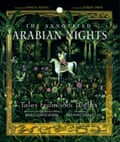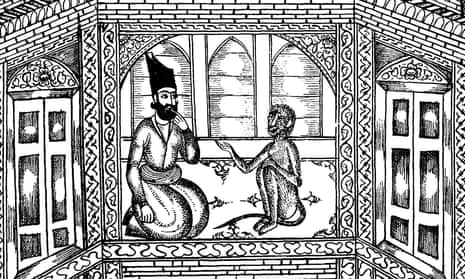From the “formidable” Princess Budur to Dalila the Crafty, a “master of ruses and rackets” who could “lure a snake from its lair”, the female protagonists of the Arabian Nights are finally being given their due thanks to a major new translation by Yasmine Seale, the first by a woman into English.
Out this month, The Annotated Arabian Nights is a riposte, said editor Paulo Lemos Horta, to Richard Francis Burton’s 1885 translation, “stripping away the Orientalism and the added, interpolated racism and sexism Burton brought to the stories”. He hopes that, “if nothing else, this new edition knocks Burton’s finally off its pedestal.”
Also known as The Thousand and One Nights, The Arabian Nights is a collection of Middle Eastern and Indian folk tales dating back to the ninth century. The stories are framed by the tale of Shahrazad, the daughter of a vizier who has been married to the homicidal king Shahriyar who kills a new wife every day. Each night, Shahrazad tells a story, leaving it unfinished in order that the king will keep her alive to hear the end the next day.

The first European translation of the tales was Antoine Galland’s Les Mille et Une Nuits in the early 18th century; Galland included stories such as Aladdin and the Wonderful Lamp and Ali Baba and the 40 Thieves for the first time, drawing from a four-volume Syrian manuscript.
“The new edition came as a response to a break in the mystery of the authorship of the most famous Nights tales that were only added in the French translation of the early 1700s – Aladdin and the Wonderful Lamp, Ali Baba and the 40 Thieves, Prince Ahmad and the Fairy Pari Banu,” said Horta, a literary historian and academic.
“The French translator, Antoine Galland, had mentioned something in his private diary about a Syrian in Paris in 1709 who would have given him these tales missing in the Arabic manuscript … He said nothing of the kind in print. In the absence of more news, over the centuries Galland has been credited as the author, inventor, and creator of these tales [and] for three centuries we imagined the tales added by Galland’s hand to the Nights in French reflected his stay in Istanbul, a French fantasy of the Orient.”
But the “elusive Syrian” from Galland’s diary has more recently been identified as Hanna Diyab, after the discovery in the Vatican library of Diyab’s Book of Travels, and “this discovery called for a modern translation of all the famous tales given to Galland,” said Horta.
“Among these Hanna Diyab tales, only Aladdin and Ali Baba existed in modern versions,” he added.
Horta said that the translation by Seale, a French-Syrian translator and poet who has previously worked with Horta on a standalone translation of Aladdin, is the first by a woman into English of both the core cycle of tales and all the tales added from Diyab’s storytelling. Although the acclaimed 2008 translation by Malcolm Lyons does include a handful of stories translated by his wife Ursula Lyons, it omits the stories of female protagonists including Parizade and Pari Banu.
Horta said the best example of how female characters get their due in Seale’s translation might be the horror story Sidi Numan, in which a husband, unable to understand why his wife only eats a single grain of rice for dinner, follows her at night and finds her feasting on a fresh corpse alongside a ghoul at a cemetery. Later, when he confronts her, she turns him into a dog, but he gets his revenge by turning her into a mare.
“We are given to understand that his wife’s strangeness may be a product of his failure to read her,” Seale said. “It is easier for him to believe that his wife is a supernatural creature than to engage with the part of her that eludes his grasp.”
The Porter and the Three Women of Baghdad, meanwhile, sees the women live alone, happily, without a man. It is, said Horta, “a mystery that attracts the attention of a porter and passing merchants who turn out to be the Caliph Harun al Rashid and his vizier Jafar in disguise. The women will welcome them to their nighttime revelry, along with three dervishes who tell their stories. The guests are sworn not to ask questions. And the women get to tell their own stories. In Seale’s version the tale is a rediscovery, it is a revelation.”
Publisher WW Norton said that the English-speaking world had relied on dated translations of the Arabian Nights “for too long”.
“Seale’s distinctly contemporary and lyrical translations break decisively with this masculine dynasty, finally stripping away the deliberate exoticism of Orientalist renderings while reclaiming the vitality and delight of the stories,” said the publisher.
